“The world’s most valuable resource is no longer oil, but data” – The Economist, 2017
The project is a visualisation of everyday data, inspired by a weekend holiday to the seaside in Bournemouth, and is set in the context of a summer holiday at the seaside with a group of older people on holiday.
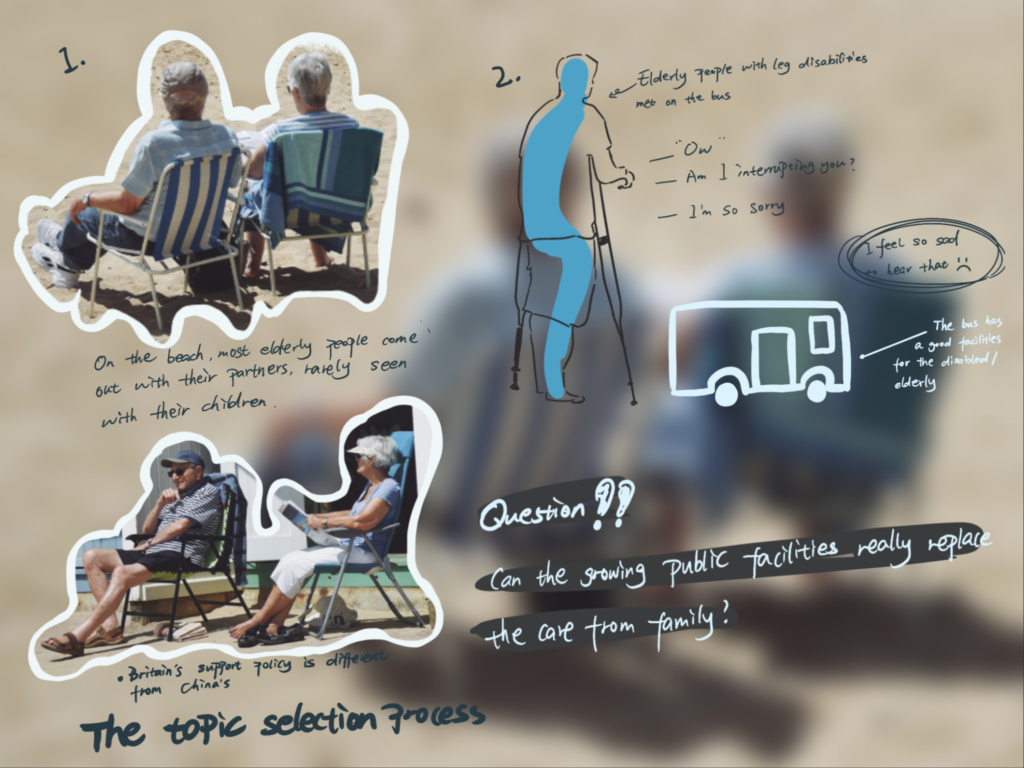
From my own experience at the beach and the photographs I took, I found that most of the older people were travelling in groups of their own age, unlike young and middle-aged parents with their teenage children, who rarely travel in groups with their own children. This reminds me of the elderly people I see alone in wheelchairs in supermarkets doing their food shopping, and the elderly people I meet underneath the dormitory building who go out alone but need to rest against the wall after two steps for medical reasons.
Therefore, for the initial idea of this project, I wanted to look at the elderly community at the seaside as a microcosm and investigate whether people nowadays are relying more and more on technology to help the elderly and neglecting to help each other.
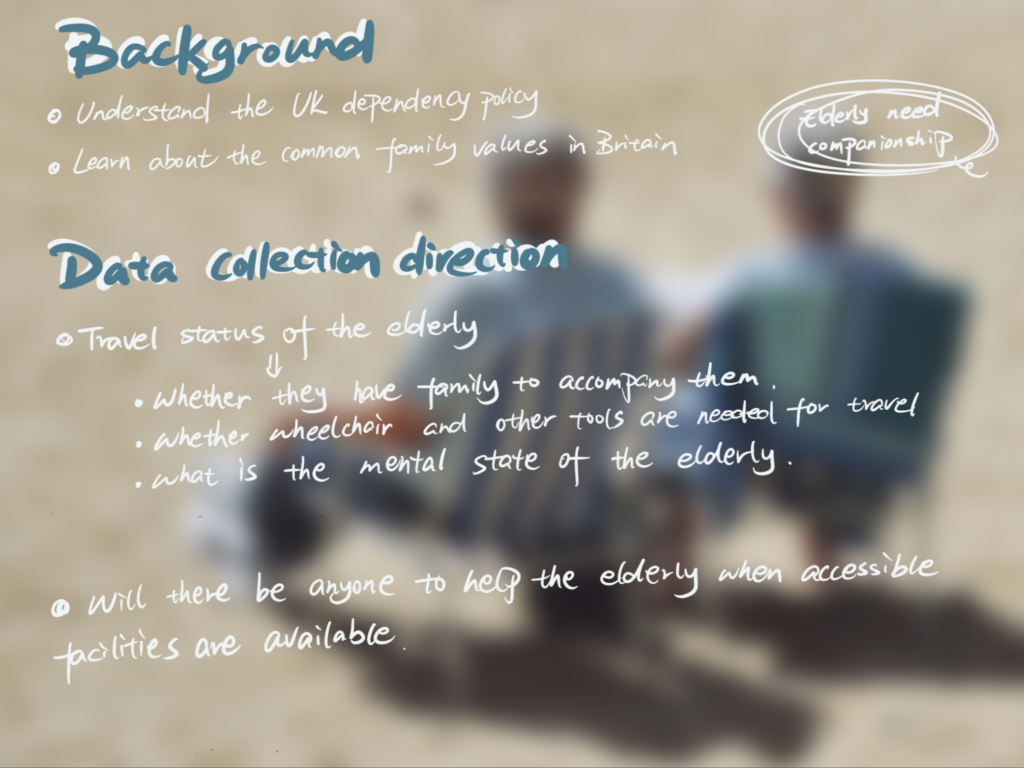
But then I realized that if I were to use this as a direction for data collection, then I would need to track older people throughout the day and record the accessibility, conveniences, etc. that they use and the daily difficulties they face, but this is difficult for me to do in my current situation, so I changed the direction of data collection to how older people prefer to spend their holidays at the beach.
Once I had chosen the direction of data collection, I proceeded with the collection of data visualisation examples.
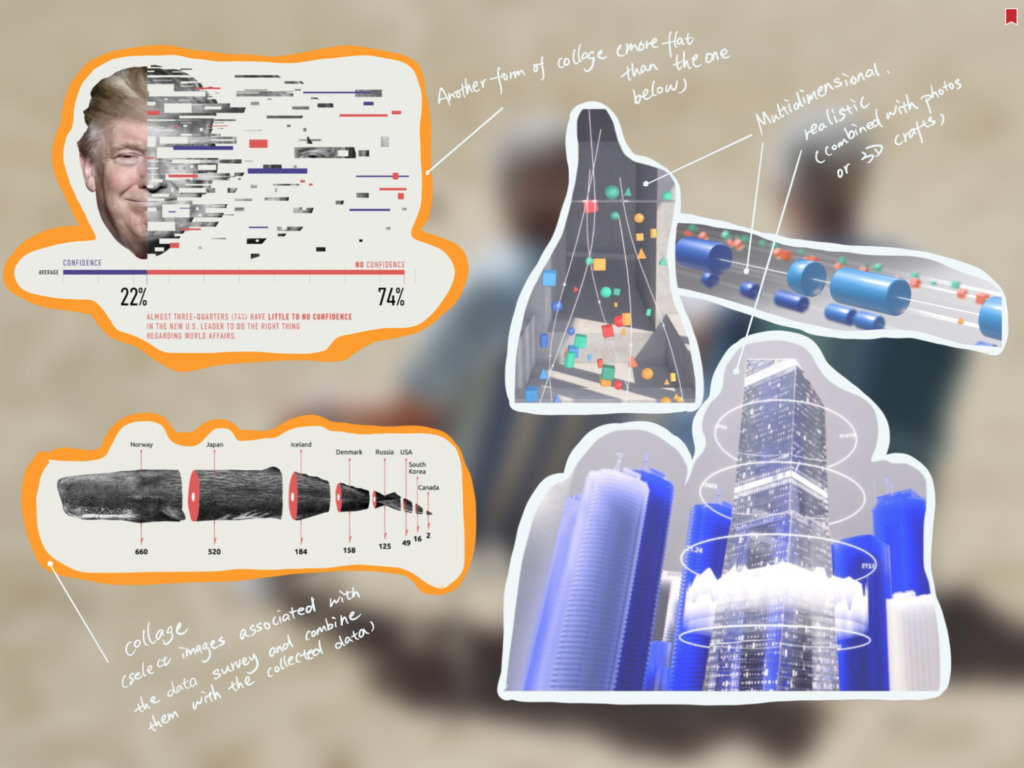
I then created a backdrop of actual photographs taken and distilled and extended some relevant elements.
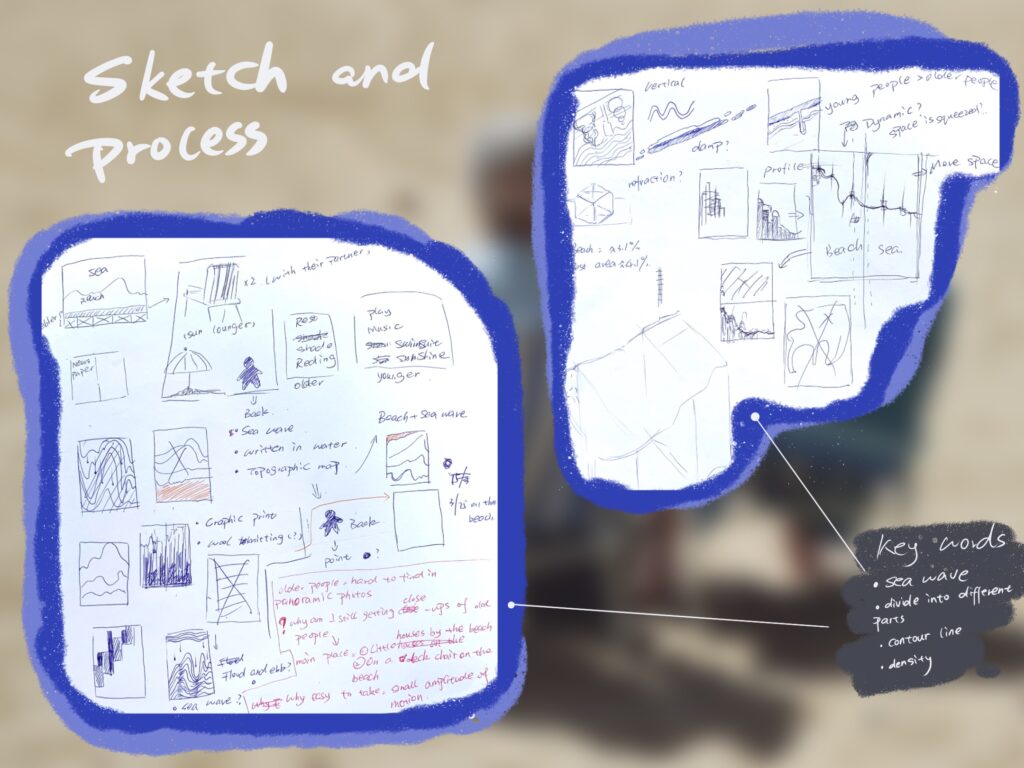
Depending on how the project went, I went back to Bournemouth and took partial and overhead panoramic views of the beach, but of course this was based on a secondary data collection after the first site visit to get a general idea of the area where the elderly congregate.
After that, I organized the data in the most primitive way.
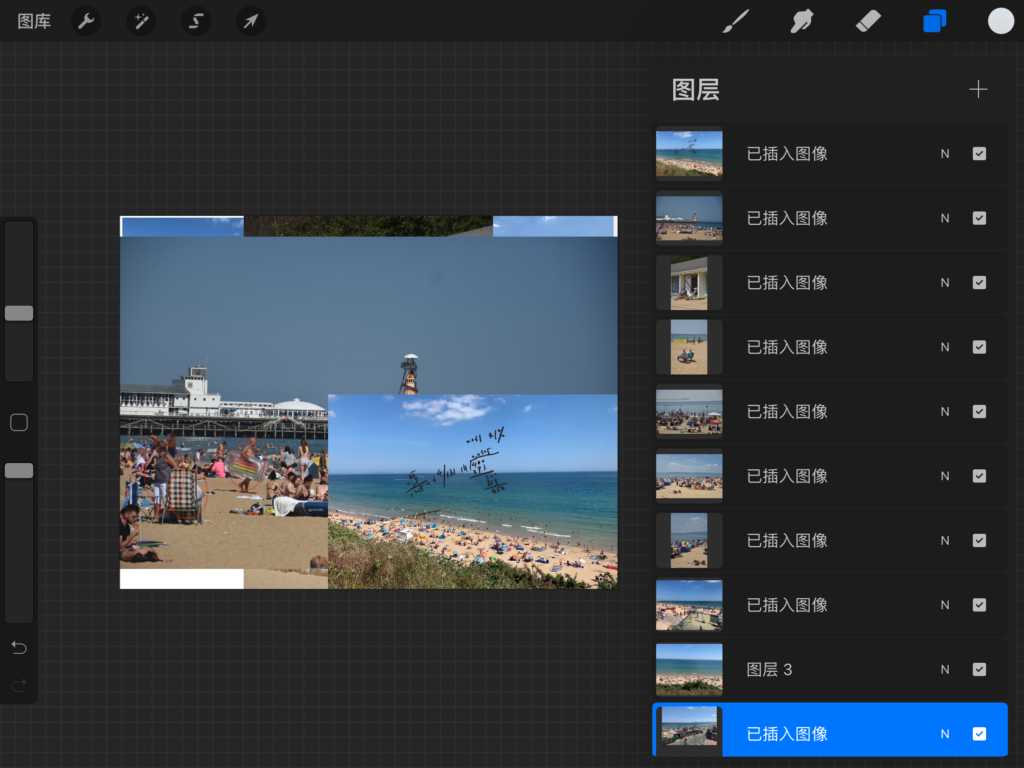
Finally I used an overhead view of Bournemouth beach as the main background for the poster and simplified it by differentiating the beach from the sand and the part of the path next to the beach by colour and the alignment of the coastline, and by using the white dots as markers of the areas where older people are located, and the length of the ‘tail’ of the white dots as a differentiator of the density of older people in the area.

